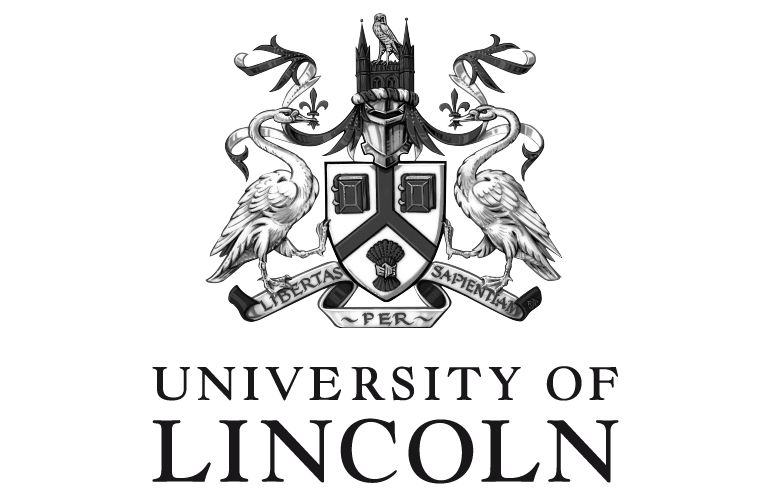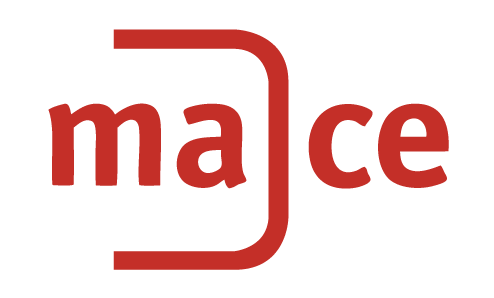Monday 3 June, 3pm
Divided Memories
LPAC Auditorium
Heather Hughes & Alessandro Pesaro (University of Lincoln)
‘Digitisation and difficult narratives about the past’
Abstract
Digitisation projects encapsulate social norms, cultural models, and habituated actions. This is especially relevant when heritage is difficult, contested or controversial. Under such circumstances, cultural heritage can be a battleground for appropriation, mutual exclusion and conflicting narratives. Drawing on the experience of the IBCC Digital Archive, the presentation will suggest a conceptualisation of inclusive cultural heritage, followed by a discussion of emerging practices in digital cultural heritage management. Lastly, the authors will discuss how these ideas can be incorporated in the design, delivery and reporting of digitisation projects. Digitisation of cultural heritage has been traditionally tackled from a ‘neutral’ technical standpoint, with a strong emphasis on shared standards, protocols, guidelines and recommendations. Problems arising at the intersection of difficult heritage with digitisation have received limited attention and are by no means neutral. This is especially true for Bomber Command, a group of Royal Air Force units tasked to deliver the strategic bombing offensive over Germany and occupied Europe during the Second World War. Bombing cities did not fit the received narratives of a ‘just’ war, and veterans have resented the lack of recognition despite their high losses and harsh service conditions. The bombing war tends to be interpreted through mutually-exclusive frameworks: heroes and criminals, liberators and tormentors, victimhood and bravery. Drawing on the experience of the IBCC Digital Archive – an shared online repository of the memories of those who served in Bomber Command and were at the receiving end of the bombing war – the presentation will suggest a new conceptualisation of inclusive cultural heritage, followed by a discussion of emerging practices in digital cultural heritage management intended to bridge the gap between mutually exclusive stances. Lastly, the authors will discuss how these ideas can be incorporated in tools and practices, and their impact on the design, delivery and reporting of digitisation projects.

Prof Heather Hughes
Professor, Cultural Heritage Studies
University of Lincoln
Heather was born and grew up in Johannesburg, South Africa, and completed an African Studies degree at the University of the Witwatersrand. Her postgraduate studies were all in London: MA in Southern African Studies at SOAS and PhD in History as an external student of the University of London. Heather’s academic career began at the University of Natal (now KwaZulu-Natal) in Durban, South Africa, where she taught African Studies (mostly colonialism, nationalism, political economy and gender). Heather became interested in tourism and heritage through working for new government structures after 1994 on refurbishing neglected heritage, and joined the University of Lincoln in 2001. From student days onwards, Heather was active in the anti-apartheid movement, focusing mostly on educational issues and detainees’/political prisoners’ rights.

Alessandro Pesaro
Digital Archivist
University of Lincoln
Alessandro is a digital humanities specialist with cross border experience in delivering digitisation projects of archival collections, books and library materials. His research and teaching activities are both in the sphere of digital humanities / cultural heritage management. Alessandro also provides expertise for the delivery of digitisation projects undertaken by the Lincoln International Business School, while at the same time being responsible for the maintenance and management of the International Bomber Command Centre Digital Archive.
Laura Gambone (ISTORECO), Rosario Milano (IPSAIC “Tommaso Fiore”), Andrea Villa (Freelance journalist) & Andrea Filippo Saba (Istituto Nazionale Ferruccio Parri)
Roundtable: ‘The Bombing of Italy and its impact on Art, Heritage, Everyday Life and Authorities’ Responses’
Abstracts
Laura Gambone: ‘Memories of Leghorn’s Bombings’
During the Second World War, Leghorn was one of the most heavily bombarded cities in Italy. This was a consequence of having the presence of a harbour and heavy industrial factories. Leghorn was one of the most attacked Italian cities by allied raids. Between the 16th of June, 1940 and the 26th of July, 1944 the city was bombed 56 times. The most important of which were the French bombings between the 16th and 22nd of June, 1940, as well as the 9th of February, 1941, and the Anglo-American bombings between the 28th of May, 1943 and the 7th of June, 1944. The biggest raid, which is the most remembered by the locals, happened on the 28th of May, 1943. The city centre was subjected to its first “saturation bombing”. Minutes after the sound of the sirens, Leghorn was shaken by the impact of bombs. Engulfed by the fire, the rooftops, the walls and entire buildings had been destroyed. The frequent bombing destroyed a great part of the architectural heritage, leaving a great number of corpses and homeless behind. These catastrophes marked the lives of the survivors like an ugly scar. Many were forced to wait for years after the war to have a home. This was an experience that left its mark on the city and the memory of the survivors more than any others. This presentation will introduce the results of a large study on the witness accounts of the survivors and their struggles that followed. This project had collected 400 interviews of men and women, who were children and teenagers at the time, that recounted their experiences and the experiences of their families during these devastating bombings.
Rosario Milano: ‘December 1943: Bari under Bombing’
On December 2 1943, 105 bombers Junkers Ju 88 of Luftwaffe attacked the harbour of Bari and shelled all of the ships docked there. Harbour of Bari was the strategic centre of the British 8th Army, but the consequences of Bari’s bombing were heavy above all for civilian population living in the oldest part of the city close to the harbour of Bari. Among the ships hit by the bombings there was the “John Harvey”, arrived four days earlier from the USA. When the German airplanes hit the harbour, the steamer was waiting to unload its contents: 1350 tons of bombs, containing a toxic substance known as “mustard gas”. This air attack produced the same effect of a chemical attack as well as the first victims, even if in an indirect way, of chemical weapons during World War Two.
Andrea Villa: ‘Art and War in Italy. The contribution of British Monuments Men to the protection of Italian monuments and works of art, between 1943 and 1945’
Thanks to Hollywood (the film Monuments Men, 2014) the history of the Monuments Men (MM) is well known: they were a group of approximately 400 service members and civilians, men and women, from fourteen nations, most of whom volunteered in the MFAA, the Monuments Fine Arts and Archives Program, created in 1943. Many had expertise as museum directors, curators, art historians and archivists. They had to protect cultural treasures so far as war allowed. However, until now the important role played by British MM in Italy is almost unknown: they were about twenty experts (archaeologists, professors of British universities and archivists) and their duty was that to follow the advance of Allied armies during the Italian campaign trying to protect cultural treasures, libraries and archives from the destruction caused by Allied bombing and from the damage caused by occupation of buildings by Allied troops. Just after the liberation of many cities, they started to investigate to track and locate the artistic and cultural items stolen by Nazis. Another important duty of the British MM was the creation of a list of Italian cities, of great historical and artistic value, not to be bombed by Allied bombers: for this goal they had to handle a difficult negotiation with the commands of RAF and USAAF. After the conclusion of fighting, British MM remained in Italy to oversee the complicated restitution of stolen works of art: between 1945 and 1952 the Allied returned to Italy 250,000 artistic items. Andrea Villa’s research describes the activity and the biographies of British MM in Italy, based on historical records located in UK and Italian private and public archives.
Andrea Filippo Saba: ‘The Bombing of 24th-25th October 1942 and the changing landscape of Milan’
The 28th October 1942 bombing of Milan constituted the first hard hit from the RAF. Milan had already been bombed in 1940, but by less effective airplanes and far weaker air unit than those available two years later, supported by analysis work on the building structure and city urban configuration. The daytime wave of 74 bombers had a devastating effect on the city which was preparing itself to celebrate the 20th anniversary of the fascist “march on Rome”. The consequences were psychological, as well as physical, as people realized the regime was unable to defend themselves from air attacks. Furthermore, the city administration had to manage the massive flights of inhabitants from the city to the outskirts, and the accommodation and supply of food to all those who had been temporarily displaced from their homes, more or less damaged and under scrutiny of the public engineering service. All this displayed a different landscape of the city, which would have changed again under the terror bombings of the summer of 1943 and of 1944, giving way to the reconstruction of the post-war period. The extensive analysis of documents, and the collection of witnesses, should allow to regain the memory of that time of sharp changes.

Laura Gambone
Educational Manager
ISTORECO

Rosario Milano
Researcher/Education Manager
IPSAIC “Tommaso Fiore”, Bari (Italy)
Rosario collaborates with the Department of Political Science of the University of Bari “Aldo Moro” for the teaching in History of International Relations and History of Mediterranean countries and Economic history. In 2015 he got the National Scientific Qualification as Associate Professor in History of International Relations, Societies and Institutions.

Dr Andrea Villa
Volunteer
Freelance Journalist
Andrea has a Laurea degree in Humanities (1999) and a Doctorate degree in Contemporary History (2004). From 2005 to 2009, he was Research Fellow at the University of Salerno. From 2010 to the present, he has worked as a freelance journalist. Author of five books and about sixty papers on Italian history, the Shoah and World War II.

Andrea Filippo Saba
Researcher/Education manager
Istituto Nazionale Ferruccio Parri
Andrea F. Saba graduated at the University of Milan having studied Italian war industry MNEs, an issue spread to industrial, political and diplomatic aspects of the expansion of Italian influence abroad in the 1920s and 1930s. Later on, he turned to environmental history (culture and pollution in Italy) and the Resistance and political history of the 20th century.








